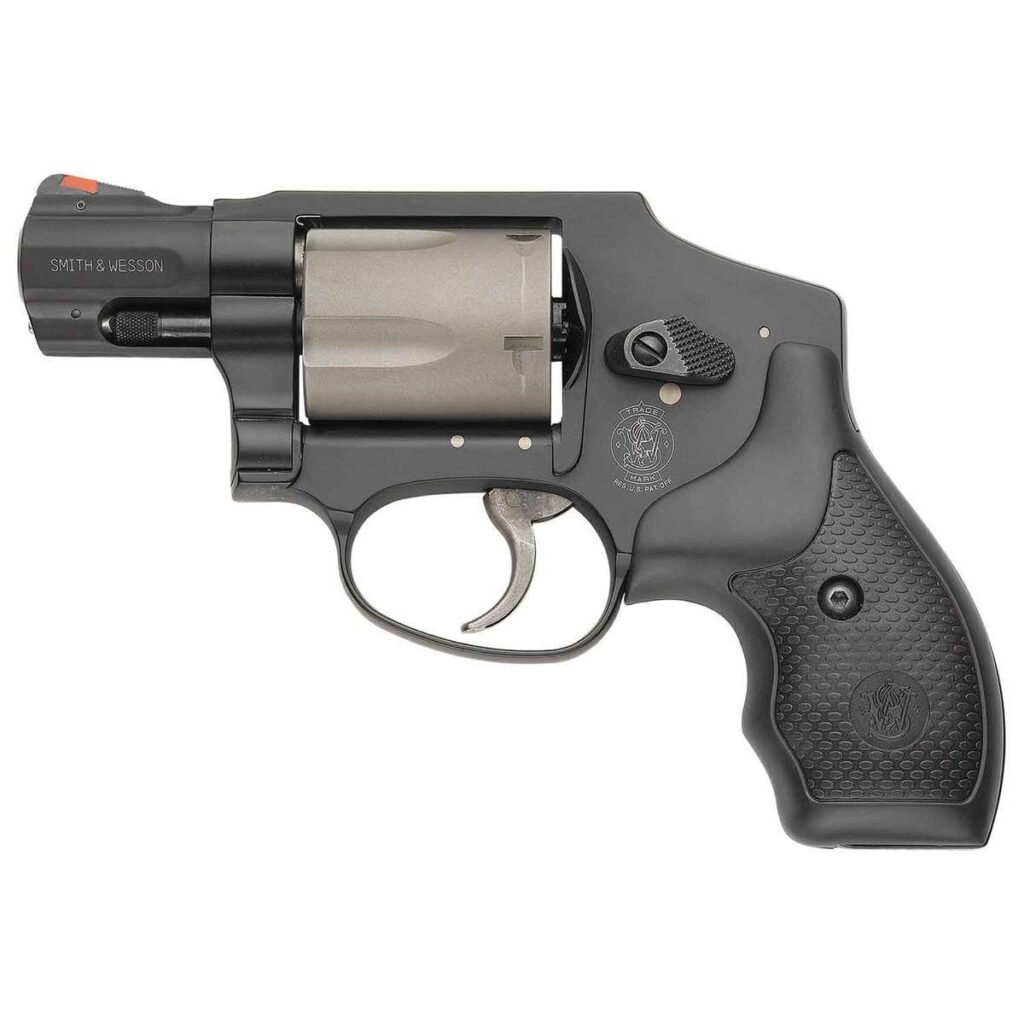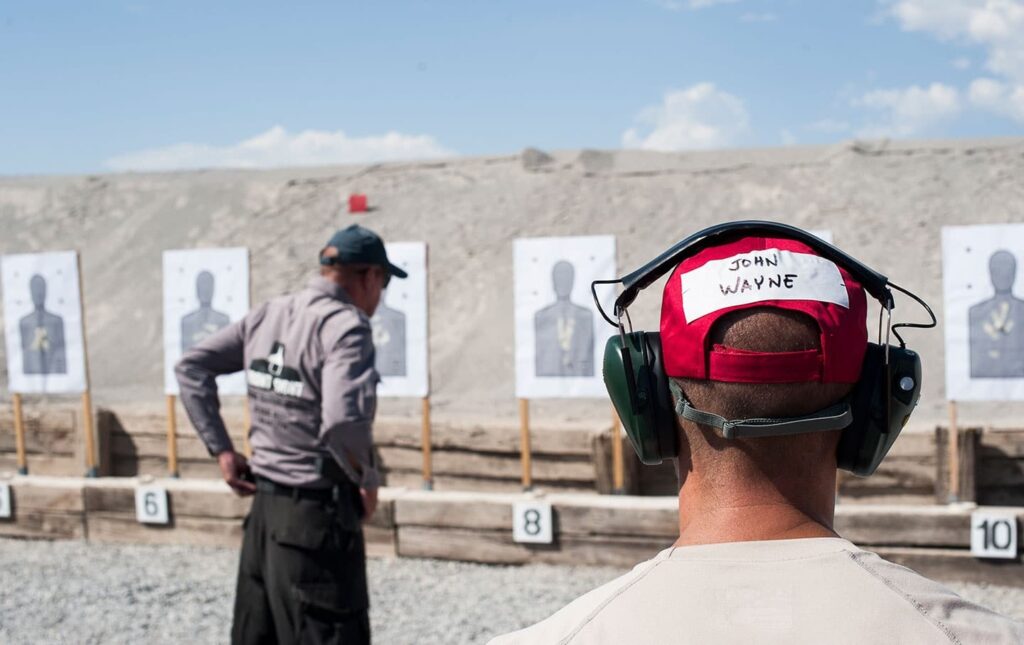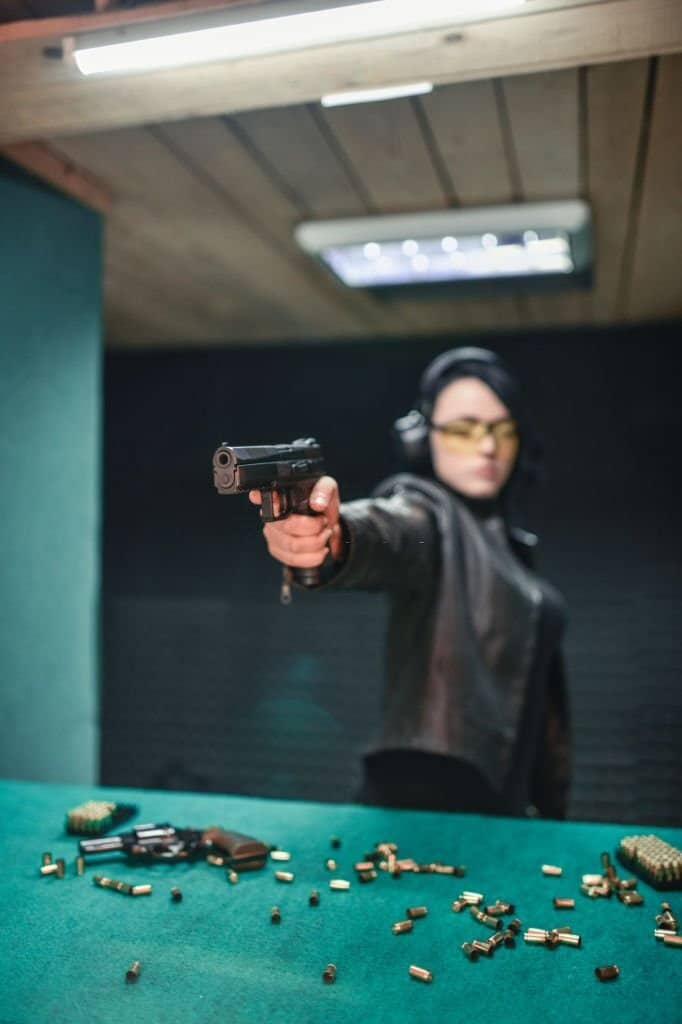What Is the Difference between Double-Action Pistols and Semi-Automatic Pistols? The sheer volume of terminology is one thing that throws folks off when they become new gun owners and join this realm for the first time. If you’ve never worked with a gun before, terms like “double-action,” “striker-fired,” “semiautomatic and even “ballistics” may seem foreign.
Naturally, as people who understand the meanings of these terms, we want to be as welcoming to newcomers as possible. One of the most effective techniques is to clarify the similarities and distinctions between terminology like double-action and semi-automatic, as well as their histories.
So let us begin there.
When were double-action pistols and semi-automatic firearms invented?

Double-Action
The first double-action handguns were developed in the mid-1800s, and Lieutenant Frederick E. B. Beaumont, a British Army engineer, patented the first double-action revolver in 1856.
His invention was for enhancements to the existing Adams revolver, and the resulting new design was known as the Beaumont-Adams revolver. This revolver was a huge hit in Europe and around the world, and Beaumont was even awarded a patent in the United States. Many of the double-actions were licensed for production in Massachusetts, and many of them saw service during the Civil War.
The first double-action revolver made in the United States did not appear until almost 20 years later when Colt launched the M1877.
While each of these proved successful, they were early forerunners rather than genuinely modern firearms. With the M1889, Colt released the first fully modern double-action revolver 12 years later. The M1889 was the first revolver to use a swing-out cylinder rather than the traditional top-break or side-loading cylinders.
Semi-Automatic
A rifle produced in 1885 was the world’s first semi-automatic firearm. There were a few semi-automatic pistol types created in the years after the rifle, but it wasn’t until 1896, when Paul Mauser released his Mauser C96 handgun, that the semi-automatic pistol gained traction. Mauser’s pistol, often known as the “Broomhandle,” paved the way for the semi-automatic pistols that followed.
However, in the same year that Mauser was inventing semi-automatic handguns, another gun designer gave us what would eventually become our modern designs. Of course, the individual was John Moses Browning.
The M1900, which used a 7.65mm cartridge, was Browning’s first successful design. Browning went on to develop pistols in .25, .38, .380, .45 ACP, and, eventually, 9mm calibers. Those final two cartridges are based on his most famous and long-lasting pistol designs: the 1911 and the Browning Hi-Power — have you heard of them? One may claim that most current guns evolved from these guns.
What Do the Terms “Double-Action” and “Semi-Automatic” Mean?
Both words refer to distinct firearm functions. They specifically refer to functions connected to firing the firearm.
Double-Action
The operation of the trigger is referred to as double-action. A double-action handgun has a trigger that is designed to both cock the hammer and fire the pistol.
Many early gun designs followed the form factor of flintlock pistols, which required the hammer to be drawn back to fire. This is often referred to as a single action. The double-action mechanism allowed a single trigger pull to cock the hammer as well as release it to shoot.
The phrase “double-action” refers to the two events that occur within the gun during the single act of pulling the trigger. The first is that it draws back the hammer, and the second is that it shoots the gun. If this is a revolver, the cylinder is also spun during the first movement of cocking the hammer.
Another intriguing fact regarding double-action firearms is that some are both double-action and single-action, while others are solely double-action. These are sometimes abbreviated as DA/SA (double-action/single-action) and DAO (double-action-only). Don’t worry, we’ll get to some instances shortly.
Semi-Automatic
The word semi-automatic refers to how the entire gun works. A semi-automatic firearm is one that inserts a fresh cartridge into the chamber after ejecting the previous one. Any gun with the action will go through that motion.
The fact that the trigger must be reset after this cycle makes it semi-automatic (rather than just automatic). To shoot another bullet, the trigger must be activated once again, but with an automatic, the trigger can simply be held down. Each round fired by a semi-automatic must have its own trigger pull.
Crossover
This actually takes us to an intriguing parallel. Despite their differences, both double-action and a semi-automatic pistol will shoot a cartridge every time the trigger is pressed. In truth, certain semi-automatic double-action handguns exist.
Any modern non-revolver gun with a hammer will be semi-automatic and double-action. The Beretta 92, popularly known as the M9 since it was the standard sidearm of the United States Army, is a semi-automatic pistol with a double-action hammer. It’s also an illustration of a DAO gun.
The much-loved 1911, winner of two World Wars, one of the most renowned firearms of all time, and the gun that the Beretta was designed to replace, is actually a changed single-action handgun. While the pistol’s semi-automatic operation cocks the hammer back as it travels through its cycle, the hammer must be manually pulled back to discharge the first round that’s chambered. Or, at least, this was the case originally; newer double-action versions are now available.
However, just because a modern gun is semi-automatic doesn’t make it a double-action gun – a double-action gun must contain a hammer. There are some highly popular semi-automatic handguns that don’t use a hammer and instead employ a striker. Some of them you may have heard of: the Sig Sauer P320, the HK VP9, and practically every Glock.
Some firearms, such as the Sig Sauer P229, are both DA/SA and semi-automatic. When loading a gun like this, you can rack the slide to chamber a cartridge while also cocking the hammer, making it work like a single-action.
You may also use the built-in decocker to lower the hammer without shooting it, and then squeeze the trigger to make it a double-action. The semi-automatic action then cocks the hammer again after they have fired it.
The distinctions between double-action and semi-automatic firearms
The most significant distinction between double-action and semi-automatic is that both phrases refer to entirely different actions; thus, they are not mutually exclusive. The term “double-action” relates to the gun’s action, or more particularly, what happens when the trigger is pressed. The term “semi-automatic” refers to what happens when the gun engages in its firing cycle – the action of the gun not just the trigger.
Learning all of the technology and vocabulary associated with gun ownership is a never-ending task. Hopefully, this has cleared things up a little and you can now tell the difference between double-action and semi-automatic pistols.
What’s a good semi-automatic pistol?
This is an open ended question with many answers. What I can say the most popular to date is the Glock 19 9mm. This semi-automatic pistol has been tested and trialed. You certainly can’t go wrong with this semi-automatic pistol choice.
What’s a good revolver pistol for beginners 2022?
I include revolvers for beginners because at the end of their reliability and ease of working through malfunctions. At the end of the day there are many different revolvers to choose from, but the one i recommend to my students is the Smith & Wesson Model 686+. I chose this one because of the 7 round capacity and there is just a distinct history that Smith and Wesson has over many other revolver manufacturers.


